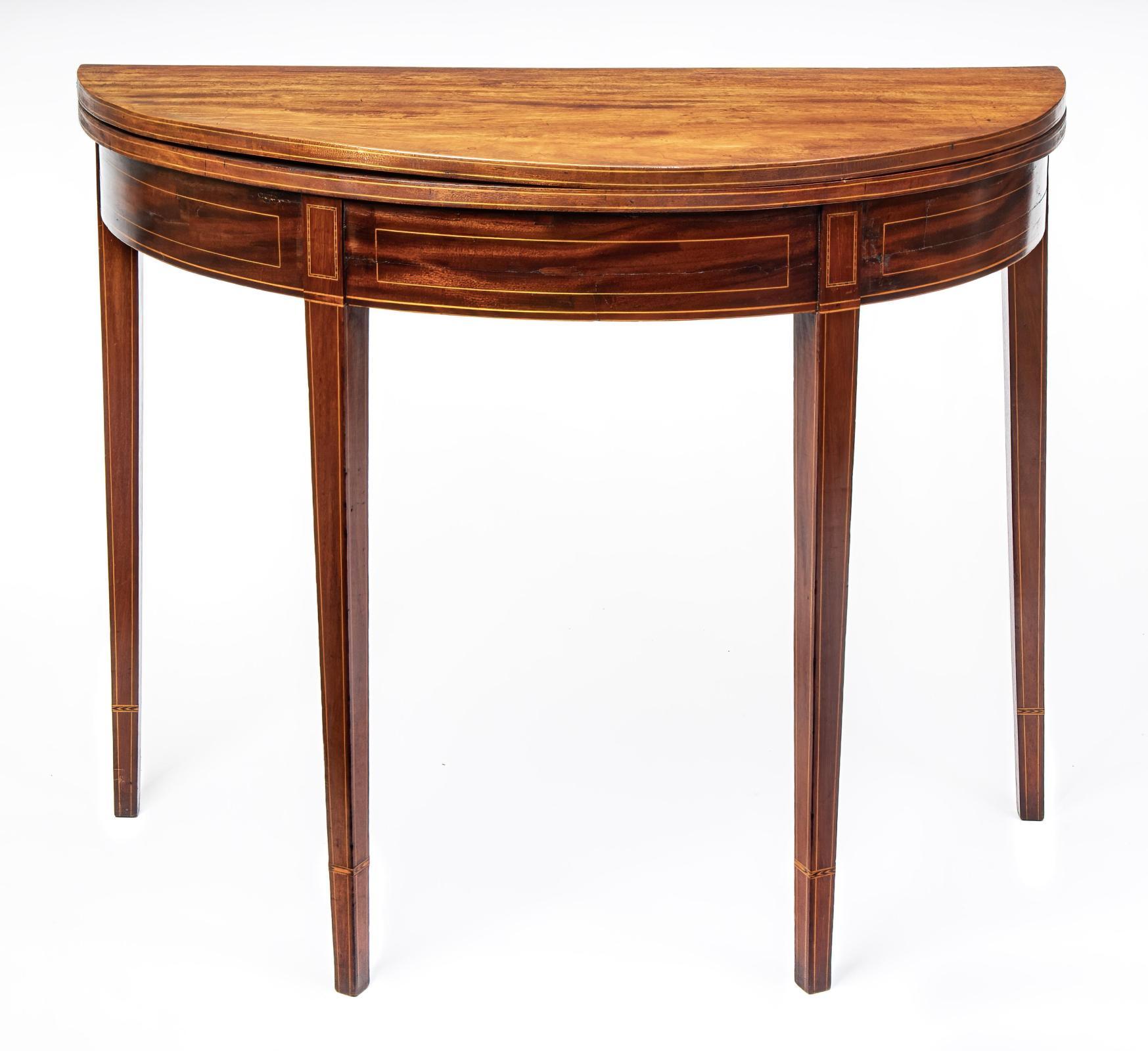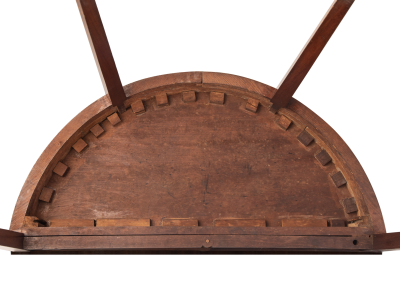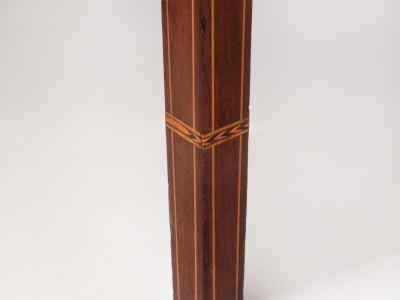Card table
Greater Philadelphia, Pennsylvania, region including Delaware and New Jersey
1795-1815
Maker
Possibly Janvier school
Measurements
29 1/2 in x 35 3/4 in x 17 5/8 in
Materials
Mahogany, light and dark inlays; hard pine (frame laminations), walnut (inner and outer rear rails)
Credit Line
Historic Odessa Foundation, The David Wilson Mansion, Inc.
Accession Number
1971.588
Condition Notes
Five small glue blocks attached to the right underside of the tabletop are replacements. Two screws at each end secure the tabletop but appear to have been added later. The top leaf is slightly warped.
Provenance
The card table was bequeathed in 1942 by Dr. and Mrs. J. Newberry Reynolds to The David Wilson Mansion, Inc.
Comments
This half-round or demilune card table was called a “circular card table” in the period. It conforms generically to Philadelphia examples, but this table embodies some very distinctive features that suggest possible—even likely—fabrication in the region influenced by John Janvier’s shop and workers. Among those features, the back faces of the rear legs are inlaid with stringing. This area, which typically faces a wall, was not decorated. Among the few exceptions is a card table made in Smyrna or Dover (acc. no. 2007.32). The inner and hinged outer rear rails of this table are made of walnut, rather than a less expensive wood, such as oak. A third “local” feature lies in the high number of glue blocks that secure the fixed table top to the frame. Incidentally, these glue blocks have grooves cut into them for an unrelated purpose, indicating that they were reused materials lying around the shop.
Two other features argue that wherever this table was made, it was probably not in urban Philadelphia. The joint securing the front legs to the table frame was almost always a bridle of long, flat tabs that straddled the frame. These legs slide into a dovetail-shaped groove. Second, the inlaid banding forming cuffs on the legs is not symmetrical—an important rule for ornament. Instead, the maker appears to have cut an existing or leftover section of banding without regard for the inlaid pattern it presented.
Bibliography
Zimmerman, A Storied Past, 150-152.


